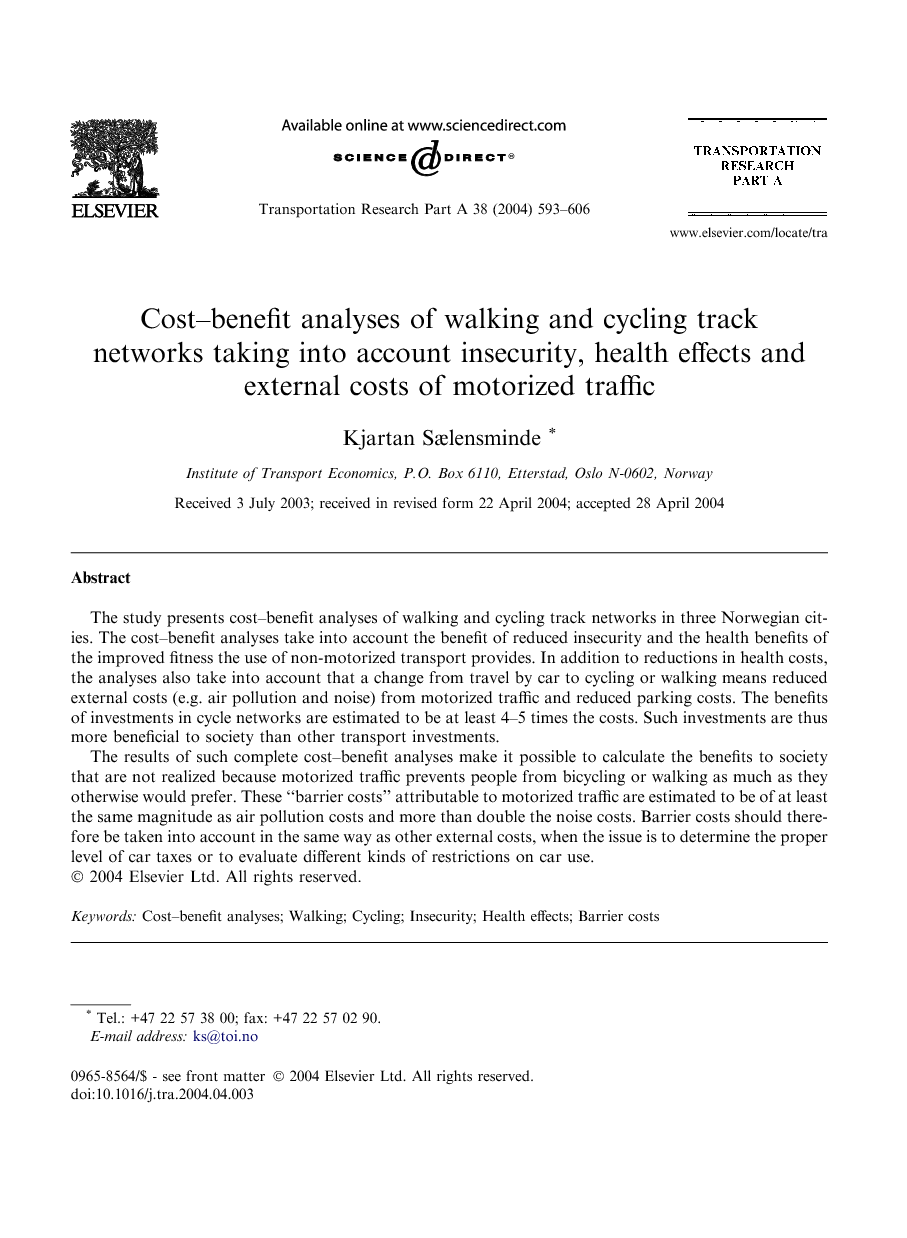ترجمه فارسی عنوان مقاله
تجزیه و تحلیل هزینه - فایده شبکه های مسیر پیاده روی و دوچرخه سواری با توجه به عدم امنیت حساب کاربری، اثرات بهداشتی و هزینه های بیرونی از ترافیک موتوری
عنوان انگلیسی
Cost–benefit analyses of walking and cycling track networks taking into account insecurity, health effects and external costs of motorized traffic
| کد مقاله | سال انتشار | تعداد صفحات مقاله انگلیسی |
|---|---|---|
| 23443 | 2004 | 14 صفحه PDF |
منبع

Publisher : Elsevier - Science Direct (الزویر - ساینس دایرکت)
Journal : Transportation Research Part A: Policy and Practice, Volume 38, Issue 8, October 2004, Pages 593–606
ترجمه کلمات کلیدی
تجزیه و تحلیل هزینه فایده -
پیاده روی -
دوچرخه سواری -
نا امنی -
اثرات بهداشتی
هزینه های سد
کلمات کلیدی انگلیسی
Cost–benefit analyses,
Walking,
Cycling,
Insecurity,
Health effects,
Barrier costs,

